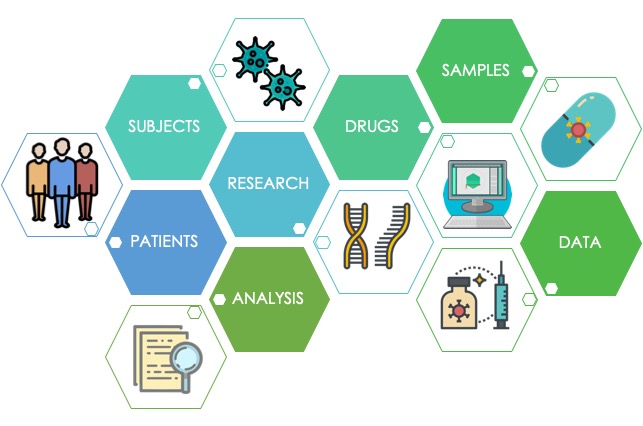For the longest time I have been deciding what my first article for this blog should be about. Since I’m interested in almost anything that comes into my hands and brain (as every proper science enthusiast ?), it was not easy to decide on just one topic. But then it came to me. Not too long ago I watched a movie that definitely didn’t leave me apathetic, so I came to the logical conclusion to share it with you. “A Beautiful Mind” is a perfect example of science in everyday life, so I wanted to delve into it more closely and in as much detail as possible. Before I start the analysis of this wonderful movie, I should take a moment and warn you that there are going to be spoilers along the way, so if you want to watch the movie first, I highly recommend you do so.
Friedrich’a ataxia (FA) is a progressive neurodegenerative disease that affects 1 in every 50 000 people worldwide. Therefore, it falls under the umbrella of rare diseases. The thing with rare diseases is that it’s hard to get funding for researching their pathophysiology and possible therapies (ergo the name “orphan drugs”). However, with the recent rise of gene therapy, more and more private investors put their money towards finding a cure for 1 in 50 000 people. So don’t be misled by the title of this article – FA is still a rare disease, but its popularity among research groups and institutes has been growing for the past few years. The main reason for such blooming is the emerging field of gene therapy.

What is a clinical trial and how (why) does it work?
A clinical trial is a study conducted on human volunteers to investigate a variety of questions on a treatment/intervention tested:
- is the treatment/intervention safe?
- does the treatment/intervention work?
- does the treatment/intervention work better than what is already available (if there is a similar treatment/intervention)?
Blog rewind
Co-author: Mario Borna Mjertan
Greetings, S3 blog reader! Our interactive quiz strikes again! As with our first quiz (check it out if you haven’t already), the questions are varied, this time from literature to pharmacology. Once again, don’t worry if you are not familiar with some terms, try to answer anyway.
Each question has only one correct answer. When you choose the answer, you will see whether you got it right and get an additional explanation. Beneath each question there is a link to the text from our blog that deals more with its respective topic. Have fun!
Have you ever wondered what it is exactly that scientists do? Why they decide to become scientists and what obstacles they have on their journey? In short, how they got where they are today. These and many more are the questions that any young person interested in pursuing a career in science has running around in their head. It’s a common misconception that scientists function on a vastly different level than the average person and a wonderful cognition that even high school students have quite a bit in common with scientists.
“There are no such things as incurable, there are only things for which man has not found a cure.”
Bernard Baruch, 30 April 1954
What is medical research?
Medical (biomedical) research, sometimes referred to as experimental medicine, comprises different types of research, from basic, to clinical, applied research. Different scientific fields are usually included and range from biology, medicine, physics, computational science, mathematics, chemistry, and pharmacology. The overarching intention of such research is to improve human health and well-being.
I believe it is safe to say that those of us who were at some point (or maybe still are) glued to our screens watching Grey’s Anatomy often found yourselves intrigued by some of the innovative treatments used on the patients. One of my personal favorites was a clever use of ultrasound waves to treat a hypothalamic hamartoma in a young boy. After that episode, I rushed to the Internet trying to find anything published about the technique. I was amazed by the idea and was trying to find out more about it. Is it really possible? Can it really be used as a completely non-invasive way of treating brain masses, including tumors? Is it safe? Is it maybe already in use? To my disappointment, I found nothing. I’m not sure whether I did a very bad job at googling those facts back then, or maybe really nothing had been published yet. However, I recently stumbled upon a very interesting article about the use of a head-mounted magnetic device that shrinks tumors. Since it reminded me of the cutting-edge treatment from Grey’s Anatomy, I once again googled it, only this time with greater success. As it turns out, a lot has been done and published upon this subject over the past few years.
“Dune” is a powerful word, and a fitting title for the Frank Herbert book which has been all the rage recently due to its long-awaited new film adaptation being released. Dune is really an entire franchise set in a politically, socially and scientifically intricate universe thousands of years in the future. The eponymous “Dune” is a planet also known as Arrakis, covered in sand and wildly alien creatures, which plays a key role in the Duniverse. In fact, it happens to be where most of the new movie is set. There is something not quite so alien, though, that is related to Dune (the planet and the book) very intimately, but also happens to be one of its rare phenomena you can witness first hand here on Earth, without much of a stretch of imagination. The thing in question would be Dune‘s other namesakes – sand dunes.

The mysterious neurology
Some of the most interesting, yet often limited clinical evidence comes from so called case studies. A case study offers a unique and thorough view of the disease in question, especially of how it affects one specific individual. Although intriguing, a case study can’t be considered reliable proof for forming or changing clinical guidelines or practices, due to its lack of statistical significance, or statistics in general. You see, big clinical studies, for example, are designed to predict how the majority would react to a certain drug, leaving the rare ones marginalized. Case studies, on the other hand, are meant exactly for the ones that “don’t fit in”, but also for the ones that are simply so rare it’s impossible to draw statistically supported conclusions. It’s the rare ones that bring case studies to the spotlight, and they make great teaching material for both professors and students.
In the previous article, we started discovering what is hidden behind the name of CRISPR-Cas9. The main idea of this series of articles is to understand the background of this technology for precise genome editing. It’s truly fascinating how one unusual feature of the bacterial genome has served as an inspiration for further discoveries and developments in biotechnology. Of course, none of this would be possible without the mutual cooperation of scientists all around the world.